¿Unión Europea o gran espacio?
Jeronimo Molina
Ex: http://www.galeon.com/razonespanola
«Queda por averiguar si la misión política de la, inteligencia se va a agotar en la direccion del proceso de la producción y en el planeamiento de la economía».
F. J. CONDE. (Misión política de la inteligencia)
1. DECADENCIA TERMINAL DE EUROPA
 Se habla y se escribe, con la aquiescencia general, de las Europas de los pueblos, de las regiones, de las lenguas, de los negocios. Tempranamente asistimos, ya al erigirse las democracias de Potsdam, a la Europa de los partidos, cuya verdadera dimensión se ha vuelto a poner de manifiesto en fechas recientes con ocasión de la estigmatización antipolítica de la nación austriaca y su gobierno consensualista (1). Hay también la Europa de los políticos de vocación humanitaria y cosmopolita, especie venática en la que se significa un mal profundo de civilización. En este sentido, hace décadas que Europa proclama con contundencia ante el mundo que se arrepiente de sus errores, encarando de la peor forma posible lo que Julien Freund denominó el fin del Renacimiento. Los artistas entremetidos y los intelectuales denunciantes, profesionales de la crítica, piden perdón a los muertos y a los vivos por las consecuencias de la fáustica misión del europeo (2): la aceleración del tiempo histórico, el impacto de la tecnología sobre el aluvión de la vida humana colectiva (la Tradición). El viejo continente, así se ha decidido, es «culpable de los servicios prestados».
Se habla y se escribe, con la aquiescencia general, de las Europas de los pueblos, de las regiones, de las lenguas, de los negocios. Tempranamente asistimos, ya al erigirse las democracias de Potsdam, a la Europa de los partidos, cuya verdadera dimensión se ha vuelto a poner de manifiesto en fechas recientes con ocasión de la estigmatización antipolítica de la nación austriaca y su gobierno consensualista (1). Hay también la Europa de los políticos de vocación humanitaria y cosmopolita, especie venática en la que se significa un mal profundo de civilización. En este sentido, hace décadas que Europa proclama con contundencia ante el mundo que se arrepiente de sus errores, encarando de la peor forma posible lo que Julien Freund denominó el fin del Renacimiento. Los artistas entremetidos y los intelectuales denunciantes, profesionales de la crítica, piden perdón a los muertos y a los vivos por las consecuencias de la fáustica misión del europeo (2): la aceleración del tiempo histórico, el impacto de la tecnología sobre el aluvión de la vida humana colectiva (la Tradición). El viejo continente, así se ha decidido, es «culpable de los servicios prestados».
Se ha contado, a pesar de todo, con una literatura de resistencia espiritual, voz discordante que recuerda a los europeos su constitución histórica (3). Por encima del culto maquiavélico de los neonacionalismos a una Europa neohelenística cuarteada en patrias minúsculas, encerradas en el folclore tribal y linguístico, azotadas acaso por la ignorancia de una elite resentida, existe un horizonte que rebosa desafíos, hoy tal vez, como pocas veces desde que en 1914 comenzara el ciclo de la guerra civil europea. Se asiste, pues, con sorpresa al espectáculo de una civilización que se ha transformado en la abogada de unos principios que la niegan. En esencia: el universalismo político, el intervencionismo económico y el moralismo humanitario. Estos principios dan contenido a una variante del pensamiento único, de raiz antipolítica, que bien podría denominarse Neorrepublicanismo y al que la mayoría se adscribe, contando acaso con la general aquiescencia (4).
Los otrora intelectuales críticos europeos, devenidos orgánicos en el sentido de Gramsci, defienden el llamado pluralismo social en nombre del consensualismo (5), valor en el que se inspira el pendant llevadero o light de las viejas ideologías totalitarias -lo que explica, dicho sea de pasada, que en nombre del consenso se pueda atacar a la democracia, actitud típica del democratismo (6)-. En este sentido, la ideología denominada de centro constituye la forma electoral que en la política interior de los Estados europeos adopta aquel pluralismo social (7). Este punto de vista, llámese ideología, mentalidad o forma del pensamiento, resulta ser acusadamente sociologista -lo social es lo total (8)-. Desde su óptica, la política es definida negativamente: no-discrepancia, no-debate, etc. En última instancia, no-política. Mas el pluralismo constituye también un inadvertido factor polemógeno en las sociedades modernas («industriellen Konfliktgesellschaften»(9). Para evitar sus efectos, especialmente el conflicto generalizado, la temida hipótesis de la «guerra de todos contra todos», se debe recurrir forzosamente a la homogeneización de la opinión pública, bien a través de la propaganda, bien mediante el terror.
En el plano del espíritu, Europa padece hoy la confusión de las formas del pensamiento y de los campos pragmáticos de la acción humana. Parecen borradas, una vez eclipsado el astro del racionalismo moderno, las fronteras epistemológicas y praxiológicas que en otro tiempo delimitaron con precisión la jurisdicción de las distintas actividades humanas. Así, la política parece haber renunciado a cumplir su finalidad específicamente política y sus medios se consagran muchas veces a la manipulación de la economía política -«Steuersstaat» o Estado fiscal (10)-. Los economistas, por su parte, juegan la baza de los poderes indirectos y se postulan como arbitristas políticos; en el fondo, los neoliberales economicistas (11) y, naturalmente, los neokeynesianos (12) responden al patrón de lo que Wilhelm Ropke llamaba «economócratas» (13). Los hombres de fe, a su vez, devienen activistas de una política teológica secularizadora-teologías de la liberación-y ceden su lugar a las prédicas supuestamente laicas de los «clercs»: el esteticismo, el cientificismo o el moralismo. Los principios del orden moderno parecen en trance de ser superados por un nuevo tipo de operaciones mentales en las que se pierde de vista el principio de realidad. Entre tanto, los elementos basales de la cultura europea han hecho sitio a otra cosa: la política, a la política social (14); el Derecho, a la legislación; el cristianismo, a una política teológica en el sentido de Comte; el Estado, al estatismo; la ciencia y la técnica, a la tecnología deshumanizadora.
2. DE LA NECESIDAD DE LIBERALISMO A LA NECESIDAD DE POLITICA.
Salvador de Madariaga, Ortega y Gasset y otros escritores europeos insistían en los años 1930 y 1940 en que Europa sería liberal o sería nada. En la ideología decimonónica, tal vez a falta de algo mejor o por rechazo del socialismo marxista, se vió de ese modo la solución de los males del continente. Así pues, el enfrentamiento entre el socialismo y el liberalismo contemporáneos, subyacente a la construcción europea y cuyo momento decisivo fue la publicación, en 1944, del libro de F. A. Hayek Camino de servidumbre, constituyó, tal vez, un episodio necesario en la evolución de la política ideologizada (15).
 Los problemas del liberalismo y del socialismo están ligados decisivamente a la cuestión de lo político y al problema histórico de las plurales configuraciones de la política como «habitus» (16). En ambas ideologías refléjase con acuidad el destino de la política europea, abocada al utopismo, al moralismo, al abstraccionismo, en definitiva, a la subversión de la tradición de lo Político, que unos denominan «realismo» y otros «liberalismo político» por contraposición al liberalismo ideológico (17). Puede afirmarse, por tanto, que ni el neoliberalismo de Hayek y otros economistas, ni el socialismo postcomunista pueden hoy responder a los verdaderos desafíos de Europa (Cliopolítica, Geopolítica), representados a todos los efectos por la despolitización. Por despolitización de Europa entendemos el abandono de lo Político y no tanto la desideologización de la política europea postulada por Fernández de la Mora (18).
Los problemas del liberalismo y del socialismo están ligados decisivamente a la cuestión de lo político y al problema histórico de las plurales configuraciones de la política como «habitus» (16). En ambas ideologías refléjase con acuidad el destino de la política europea, abocada al utopismo, al moralismo, al abstraccionismo, en definitiva, a la subversión de la tradición de lo Político, que unos denominan «realismo» y otros «liberalismo político» por contraposición al liberalismo ideológico (17). Puede afirmarse, por tanto, que ni el neoliberalismo de Hayek y otros economistas, ni el socialismo postcomunista pueden hoy responder a los verdaderos desafíos de Europa (Cliopolítica, Geopolítica), representados a todos los efectos por la despolitización. Por despolitización de Europa entendemos el abandono de lo Político y no tanto la desideologización de la política europea postulada por Fernández de la Mora (18).
Fue John Stuart Mill quien dio el golpe de gracia a la tradición realista europea de la política de la libertad, inventándose, como se sabe, un liberalismo social (19) de largas consecuencias. La terminología adoptada por Stuart Mill permitió al socialismo presentarse como el heredero del liberalismo (20), mixtificación que hoy sirve también para legitimar el Estado social en Europa. Sin embargo, el problema del socialismo tomó muy pronto otro cariz. En rigor, el pensamiento socialista no es propiamente político. Existe una «cratología» socialista, comprensiva de la táctica para conseguir y mantener el poder: técnicas del golpe de Estado, de la lucha revolucionaria, de la guerra de guerrillas, de la dictadura, etc., epónimo de la cual fue Mao Zedong; así mismo, puede hablarse de una «escatología» socialista-plenitud del hombre histórico, conquista de la historia-, cifrada en un G. Luckács (21), mas no hay constancia de una «política» socialista. Ni siquiera puede hablarse propiamente de una política «socialdemócrata», pues se trata, más bien, del oportunismo político tantas veces denunciado por el más cínico de los hombres de acción, Lenin.
Si bien los problemas venían de muy atrás, el dilema europeo del período de entreguerras todavía podía presentarse en los años 1930 como un supuesto típico de la política ideológica del siglo XIX, al menos hasta que la querella entre liberales y socialistas fue sustituida, sobre todo después de la II guerra mundial, por la dicotomía derechas-izquierdas, por cierto, muy poco liberal. La contraposición de derechas e izquierdas llegó a ser la quintaesencia de las democracias de postguerra altamente politizadas, o, visto desde otra perspectiva, la formulación ideológica y electoralmente aceptable del conflicto permanente que legitima a las partitocracias europeas. La crisis de la conciencia europea coincide, pues, en buena medida, con la polarización derecha-izquierda, cara y cruz de la ideología estatista (22). En este sentido, los males de Europa no podrían ya conjurarse en los términos de las viejas ideologías liberal y socialista, las cuales responden, por lo demás, a un tiempo concluido.
El problema y su solución se han radicalizado extraordinariamente, hasta el punto de que Europa o es política o será nada. El desafío histórico parece enfrentar nuevamente al europeo con su destino, que pasa por los condicionamientos de lo Político, pues, en última instancia, todo cambio histórico es un cambio en lo Político.
Gunter Maschke, que pertenece a la familia espiritual europea de los escritores políticos realistas, se ha ocupado en varias ocasiones de uno de los problemas europeos por excelencia, el de la unificación; y lo ha hecho con un punto de vista político y, al mismo tiempo, teológico político. Enemigo de la «fraseología aburrida y molesta» de la propaganda europeista, Maschke ha trasladado los problemas del continente al plano superior de lo Político, para afirmar que la cuestión de la unidad europea, en el fondo, hace tiempo que ha dejado de ser una materia opinable: el Gran Espacio constituye, tal vez, el único medio para afrontar con posibilidades de éxito las mutaciones del tiempo histórico y poder mantenerse «a nivel». Con un lenguaje que tal vez sorprenda a muchos, sobre todo teniendo en cuenta la desorientación política de los intelectuales y la ignorancia de la tradición europea del saber político, Maschke se refiere al Kat-echon o dique político, cuya tarea consiste en «detener la aceleración de la historia, bloquear el tiempo desencadenado en el camino hacia una unidad mundial sin Adán y sin Jesucristo, retardar el tiempo a través del espacio que conserva la sustancia histórica propia de los pueblos» (23). En su opinión, deudora de la crítica al universalismo político de Carl Schmitt, la forma de lo Político emergente, el Grossraum (24), representa el nuevo Kat-echon, pero el sesgo que están tomando los acontecimientos en Europa hace pensar, más bien, que «la Comunidad Europea constituye una máquina de la velocidad final, para usar las palabras de Kierkegaard, una aceleración hacia la muerte» (25).
3. UN LIBRO DE POLITICA EUROPEA.
Los problemas del europeo, destacados aquí, no son los únicos; tampoco son nuevos. Es muy probable, sin embargo, que entre ellos se cuenten los que con más urgencia reclaman el examen de la inteligencia política. Desde que se produjo la retirada europea del mundo-proceso denominado descolonización- una vez recuperada la salud material del continente al final de la Guerra civil europea, ha tenido lugar, en palabras de Díez del Corral, la aceleración del rapto o expropiación europea. Las mentes más lúcidas de Europa no han ahorrado esfuerzos para remediar esta situación y, en la medida de lo posible y de sus fuerzas, revertirla. Las soluciones argüidas, como nadie ignora, pasan casi todas por la realización de la unidad europea, concebida ésta, no obstante, desde muy diversas ópticas: el «federalismo integral» de Alexandre Marc y su escuela (26); la «política de civilización» de Rougemont, Madariaga y los demás europeístas del Congreso de La Haya de 1948; las «Comunidades europeas» de Jean Monet. En relación con estas últimas suscita un interés especial la Europa del «principio de supranacionalidad», no por su novedad como instrumento ejecutivo de una política de unificación europea, sino porque su examen conduce al corazón de lo Político: ¿cuál es el verdadero principio político federativo?
El predominio en la Europa actual de ciertos prejuicios economicistas, de los que se hace depender ahora la Unión, justifica sobradamente la relectura de un libro de Francis Rosenstiel (27), en el que se aboga, bajo inspiración en parte schmittiana, por una Europa verdaderamente política o, lo que resulta equivalente, por una Europa que trascienda el normativismo de los juristas, el automatismo de los mercados y el mito tecnocrático, mentalidades amparadas, según la opinión del autor, por el pseudo principio político de la supranacionalidad.
 En junio de 1961 tuvo lugar en la Facultad de Derecho de Estrasburgo la defensa de la tesis del doctorando F. Rosenstiel. La tesis fue publicada al año siguiente con el título Le principe de supranationalité. Essai sur les rapports de la politique et du droit (28). La obra no despertó el interés que merecía, pero poco después fue preparada la traducción al alemán. En ella tuvo Carl Schmitt una participación puntual y preciosa. El gran jurista había conocido el trabajo de Rosenstiel en una copia que, por mediación de un amigo común, Julien Freund, había recibido a principios de 1961. La impresión que le causó fue honda, hasta el punto de haber considerado la oportunidad de que un prólogo suyo acompañase la edición francesa, aparecida, a la sazón, cuando los alemanes, en palabras del propio Schmitt, temerosos de cualquier decisión en el terreno de la unificación europea, habían hecho de la no decisión una moral: «su opción por la Europa comunitaria constituye una opción a favor del ideal de la no decisión» (29). Aunque Schmitt, finalmente, rehusó escribir el prólogo, la edición alemana conservó, por deseo expreso de Rosenstiel, el subtítulo «fascinante» sugerido por aquel: Supranationalität. Eine Politik des Unpolitischen (30), es decir, La supranacionalidad. Una política de lo impolítico.
En junio de 1961 tuvo lugar en la Facultad de Derecho de Estrasburgo la defensa de la tesis del doctorando F. Rosenstiel. La tesis fue publicada al año siguiente con el título Le principe de supranationalité. Essai sur les rapports de la politique et du droit (28). La obra no despertó el interés que merecía, pero poco después fue preparada la traducción al alemán. En ella tuvo Carl Schmitt una participación puntual y preciosa. El gran jurista había conocido el trabajo de Rosenstiel en una copia que, por mediación de un amigo común, Julien Freund, había recibido a principios de 1961. La impresión que le causó fue honda, hasta el punto de haber considerado la oportunidad de que un prólogo suyo acompañase la edición francesa, aparecida, a la sazón, cuando los alemanes, en palabras del propio Schmitt, temerosos de cualquier decisión en el terreno de la unificación europea, habían hecho de la no decisión una moral: «su opción por la Europa comunitaria constituye una opción a favor del ideal de la no decisión» (29). Aunque Schmitt, finalmente, rehusó escribir el prólogo, la edición alemana conservó, por deseo expreso de Rosenstiel, el subtítulo «fascinante» sugerido por aquel: Supranationalität. Eine Politik des Unpolitischen (30), es decir, La supranacionalidad. Una política de lo impolítico.
La traducción española fue impresa en 1967 por el Instituto de Estudios Políticos, a cuya dirección se acababa de incorporar el jurista y escritor de temas políticos Jesús Fueyo Alvarez. La colección que incluyó el volumen, titulado en español El principio de la supranacionalidad. Ensayo sobre las relaciones de la política y el derecho, estaba dirigida por el gran internacionalista Camilo Barcia Trelles.
4. VIDA COMO ADAPTACION: LA UNION EUROPEA Y EL PRINCIPIO DE SUPRANACIONALIDAD.
El libro de Rosenstiel tiene dos partes en cierto modo desiguales. En la primera, que recoge los tres primeros capítulos, el autor desarrolló propiamente su tesis, a saber: la supranacionalidad no es ni un concepto jurídico ni un principio político. En realidad, es una especie de categoría mixta que encubre la confusión entre lo Político y lo Jurídico, entre la normatividad de la política y la mera normalidad del derecho. Según sus propias palabras, la supranacionalidad consiste en una «técnica de integración» que presupone la alteración de las relaciones entre la política y el derecho (31). A esta conclusión llega una vez que la «esencia política de la soberanía» y las relaciones entre soberanía, supranacionalidad y federalismo han sido estudiadas.
En la segunda parte se examinaron con detalle algunas de las consecuencias políticas de la supranacionalidad. Sus dos capítulos quieren presentar, aunque no de manera sistemática, las relaciones concretas entre la política y el derecho, la economía y la política, la técnica y la política y lo Político y lo militar en el marco de las instituciones europeas.
El punto de partida del estudio es la situación histórica del Estado-nación europeo, caracterizada por el «conflicto de soberanías declinantes» (32). En ese contexto, la ilusión del jurista consiste en creer que sus nociones pueden sujetar a la soberanía, es decir, a la facultad de decidir sobre la situación de excepción («Über den Ausnahmezustand entscheiden» (33). Rosenstiel, que recoge el concepto de soberanía de Schmitt, no admite el prejuicio jurídico según el cual la crisis de las soberanías europeas dará lugar, gradual o automáticamente, a otra cosa, canalizado el proceso por las instituciones correspondientes. En su opinión, «el jurista, si bien no se adapta a los rodeos de lo Político, no puede resistir el deseo de integrar cualquier individualidad jurídicamente sospechosa en una u otra categoría jurídica preexistente» (34).
Contra la opinión dominante desde entonces, que atribuye al principio de supranacionalidad unas virtudes políticas extraordinarias (la coordinación de soberanías, la misteriosa y automática cancelación de la guerra civil europea sin necesidad de un Tratado de paz, la misión pedagógica federalista, la integración funcional de las naciones), el autor tuvo el valor intelectual de espetar un silete iurisconsultus in munere aliene!: la técnica de la supranacionalidad no puede franquear el escollo de lo Político, pues «es un hecho que no se podrá contradecir que lo jurídico no puede conducir más que a lo jurídico» (35). Curiosamente, el principio que cultivan los abogados del espontaneísmo de las instituciones jurídicas comunitarias es el mismo que pregonan los neonacionalismos periféricos europeos: la soberanía se aniquilará a sí misma y de esta donación generosa emanará una nueva forma de lo Político... Mas a un poder sólo puede sucederle otro poder. Lo dijo Vilfredo Pareto e insiste en ello Rosenstiel. En materia política, creer en «tomas de conciencia y lentas maduraciones equivale a erigir la providencia al rango de institución» (36). El autor es aquí, tal vez, demasiado comedido, pues al no existir en política el vacío de poder, se trata de que la parcela que una élite abandona se la apropia otra: bien la «New class» cosmopolita de los tecnócratas de Bruselas, bien los cuadros de los partidos neonacionalistas que quieren jugar a la gran política.
Rosenstiel desengañó a los bellos espíritus de la política europea, pues nada permite pensar que la soberanía estatal pueda autolimitarse o, como dicen en nuestros días los maquiavelistas, compartirse: en la soberanía sólo cabe la sucesión (37). Al estar por encima de la legislación, la soberanía puede crear excepcionalmente las situaciones jurídicas. La afirmación inversa le da la vuelta a la primacía existencial de lo Político sobre lo Jurídico. El derecho no puede ser, en este sentido, soberano. Tampoco, por cierto, la Constitución, como sabiamente advertía Guglielmo Ferrero al acuñar la noción de cuasi-legitimidad (38).La llamada integración funcional de la supranacionalidad no podrá nunca, ciertamente, realizar el milagro que de ella se espera. Sus resultados tienen que ver, más bien, como hoy se aprecia, con la tendencia al superestatismo. Este peligro fue denunciado casi en soledad durante algunos años por el economista Wilhelm Ropke. «Si el mercado común, decía en la década de 1950, se transforma en saint-simonismo, es decir, en un dominio del aparato europeo, en un dirigismo europeo de gran estilo, no será mejor sino mucho peor que un dirigismo nacional, por no tener cortapisas y por ser más ineludible y más amplio» (39). ¿Qué ha devenido la Unión Europea aparte de una «Verwaltungsgemeinschaft», de una colección de reglamentaciones jurídicas -creadoras de nuevas situaciones jurídicas, de un cuerpo de Derecho público administrativo como el descrito por Rosenstiel? Esta interrogante y otras análogas no tienen respuestas esperanzadoras desde un punto de vista político. En esta línea, el gran logro de la política exterior europea (PESC), según se puso de manifiesto en la Guerra de Yugoslavia, consiste en haber consagrado la práctica de facultar incluso a una Rusia decadente para que intervenga en el Gran Espacio europeo (40).
Cuando Alexander Hamilton, James Madison y John Jay escribieron los artículos recogidos en The Federalist Papers algunos de los más serios obstáculos para el modelo de Federación postulado pasaban por «el interés patente de la élite política de los Estados en una resistencia a cualquier cambio que pudiese implicar una disminución de su poder o emolumentos» (41). En Europa sucede lo contrario, aunque el problema de fondo es el mismo: el mayor número de adictos a la Unión Europea o, al menos sus partidarios más activistas, pertenecen a las élites partitocráticas o burocráticas, que intentan adaptarse a los cambios en lo Político ampliando el radio de acción del estatismo (42). ¿De qué otra manera es posible interpretar la obsesión por la homogeneización de la fiscalidad del ahorro, política que impide una sana «competencia fiscal» de los Estados y a la que apenas si se aludió en la reunión de los Ministros de Economía y Finanzas de la Unión Europea, celebrada en Santa María de Feira en junio de 2000? (43). Si la consecuencia a corto plazo del principio de supranacionalidad es el dualismo de una «soberanía en suspenso» (44), lo que a largo plazo está en juego es, efectivamente, la posibilidad de despojar a la anti-ideología estatista de su disfraz racionalista, moralista y metafísico que, en opinión de Rosenstiel, «enmascara el rostro permanente de lo Político» (45).
 En el «orden de las soberanías normativamente subordinadas» (supranacionalidad) no halló el autor un verdadero principio federativo. Este se encuentra en un terreno muy distinto de la realidad política: en el «orden de las soberanías integradas», lo que se conoce como «potencia pública federal». Así, mientras que la «supranacionalidad de las comunidades es una afirmación de intención, la supranacionalidad de la federación es una afirmación de poder» (46). Para el autor, el principio federalista constituye un verdadero principio político federativo. En él cifra la posibilidad de una unión verdadera de los Estados europeos, dado que su situación geopolítica sería similar a la de los Estados de América del Norte en vísperas de la Constitución de 1787 (47). Entendido como «técnica jurídica de la democracia», el federalismo es un instrumento político que «se convierte en un modo de vinculación de las soberanías, apto para darles una única convergencia en función de una situación dada» (48). El problema, empero, es la deficiente recepción del ideal federalista, entendido como una doctrina universalista (en el sentido de Proudhon o en el de los partidarios del federalismo integral, por ejemplo), pues eso constituye la antítesis de lo Político. La Federación mundial no tiene más sentido que el Estado mundial. El ecumenismo cataláctico, moralista y religioso tiene su antítesis en el carácter partitivo de lo Político. Dicho de otra manera: para que las actividades económica o religiosa unan, lo Político tiene que separar. En el fondo, el autor ha diagnosticado muy bien la disyuntiva europea: o una supranacionalidad incapaz de adaptarse a las mutaciones en lo Político, o un federalismo funcional o parcial, meramente técnico. Cualquier cosa antes que el federalismo político. A esta especie de indefinición (49) tal vez pueda imputarse el alejamiento de lo Político de la Unión Europea, a pesar de que sus instituciones quieran consagrarse a la defensa de un régimen político concreto -el mismo Rosenstiel, confundiendo la democracia moral y la política, entiende que el federalismo es un «humanismo al servicio de la democracia» (50)-.
En el «orden de las soberanías normativamente subordinadas» (supranacionalidad) no halló el autor un verdadero principio federativo. Este se encuentra en un terreno muy distinto de la realidad política: en el «orden de las soberanías integradas», lo que se conoce como «potencia pública federal». Así, mientras que la «supranacionalidad de las comunidades es una afirmación de intención, la supranacionalidad de la federación es una afirmación de poder» (46). Para el autor, el principio federalista constituye un verdadero principio político federativo. En él cifra la posibilidad de una unión verdadera de los Estados europeos, dado que su situación geopolítica sería similar a la de los Estados de América del Norte en vísperas de la Constitución de 1787 (47). Entendido como «técnica jurídica de la democracia», el federalismo es un instrumento político que «se convierte en un modo de vinculación de las soberanías, apto para darles una única convergencia en función de una situación dada» (48). El problema, empero, es la deficiente recepción del ideal federalista, entendido como una doctrina universalista (en el sentido de Proudhon o en el de los partidarios del federalismo integral, por ejemplo), pues eso constituye la antítesis de lo Político. La Federación mundial no tiene más sentido que el Estado mundial. El ecumenismo cataláctico, moralista y religioso tiene su antítesis en el carácter partitivo de lo Político. Dicho de otra manera: para que las actividades económica o religiosa unan, lo Político tiene que separar. En el fondo, el autor ha diagnosticado muy bien la disyuntiva europea: o una supranacionalidad incapaz de adaptarse a las mutaciones en lo Político, o un federalismo funcional o parcial, meramente técnico. Cualquier cosa antes que el federalismo político. A esta especie de indefinición (49) tal vez pueda imputarse el alejamiento de lo Político de la Unión Europea, a pesar de que sus instituciones quieran consagrarse a la defensa de un régimen político concreto -el mismo Rosenstiel, confundiendo la democracia moral y la política, entiende que el federalismo es un «humanismo al servicio de la democracia» (50)-.
En la práctica, la Unión Europea parece reproducir los hábitos morales, los defectos de la virtud cívica y las relaciones de poder que han despolitizado al Estado. El superestatismo de la Unión Europea, exhibido por las reglamentaciones del trato entre particulares, la burocratización de las actividades económicas, la tendencia creciente de la presión fiscal y la nula representatividad de los tecnócratas que, sugestionados por la economía de los mercados mundiales, simulan decisiones políticas, recuerda a lo que Ortega y Gasset decía en su ensayo Del Impeno Romano: «hay épocas en que, por causas múltiples, desaparece para (los) pueblos la posibilidad de preferir unas instituciones a otras; antes bien, sobrevienen ineluctablemente, sin margen para la opción, impuestas por una necesidad mecánica e inexorable. Nadie las quiere propiamente, si por querer se entiende algo que implique el preferir (...) Esto y no otra cosa es vida como adaptación» (51).
5. DIALECTICA EUROPEA DE LO POLITICO Y LO JURIDICO.
 «Tanto desde el punto de vista jurídico como desde el político, la "supranacionalidad" constituye una máquina sin motor» (52). Con esta categórica afirmación el autor pone principio al examen de algunas referencias doctrinales y jurisprudenciales para mejor ilustrar su tesis. No buscó Rosenstiel, en ningún caso, la exhaustividad, pues no es el suyo un tratado de exégesis jurídica. Esto permite, sin violentar la estructura del libro, destacar las contraposiciones que se manejan a lo largo de la obra, pero especialmente en la segunda parte, sobre todo, la dialéctica entre lo Político y lo Jurídico, asunto que justifica su análisis. No obstante, Rosentiel dejaba aflorar sus opiniones acerca de las relaciones entre lo político y lo técnico, lo político y lo económico y también, naturalmente, las de lo Político con lo Militar.
«Tanto desde el punto de vista jurídico como desde el político, la "supranacionalidad" constituye una máquina sin motor» (52). Con esta categórica afirmación el autor pone principio al examen de algunas referencias doctrinales y jurisprudenciales para mejor ilustrar su tesis. No buscó Rosenstiel, en ningún caso, la exhaustividad, pues no es el suyo un tratado de exégesis jurídica. Esto permite, sin violentar la estructura del libro, destacar las contraposiciones que se manejan a lo largo de la obra, pero especialmente en la segunda parte, sobre todo, la dialéctica entre lo Político y lo Jurídico, asunto que justifica su análisis. No obstante, Rosentiel dejaba aflorar sus opiniones acerca de las relaciones entre lo político y lo técnico, lo político y lo económico y también, naturalmente, las de lo Político con lo Militar.
«Todo es extraño, escribía Rosenstiel, cuando se considera con ojos de novicio las relaciones entre la política y el derecho» (53). Siendo todo derecho «Situationsrecht» o derecho de la situación concreta, la responsabilidad sobre su eficacia y validez afecta de lleno a la acción política. Sin embargo, se pretende que el cuerpo que forman los Tratados constitutivos, los reglamentos, directivas y demás normativa jurídico-administrativa de la Unión Europea (el Derecho originario y el derivado) sea autosuficiente desde la óptica política, como si no hubiese solución de continuidad entre la decisión política constituyente y las prescripciones jurídicas constituidas. La soberanía política del Derecho, en contra de la opinión dominante, constituye la utopía vergonzante del normativismo jurídico. Ahora bien, como dicha mentalidad jurídica no puede existir en estado puro, la neutralidad de sus mecanismos deviene necesariamente positivista (54), lo que explica el sesgo reglamentista del ordenamiento jurídico de la Unión Europea. Excluida del mismo la decisión política, casi todos los problemas europeos parecen reducirse a una cuestión de ingeniería jurídica (55). El desarrollo del derecho de reglamentación-creador de situaciones jurídicas, en perjuicio del derecho de regulación -mero ordenador de relaciones sociales-, además de constituir la manifestación más evidente de la confusión entre lo Político y lo Jurídico, está sirviendo para hacer de la Unión un complejo artificio legislativo, ajeno cuando no contrario a los intereses de las naciones europeas.
La apelación al derecho comunitario viene eclipsando desde hace tiempo el problema del sujeto activo de la unificación de los Estados europeos. Resulta improbable que los Estados soberanos devengan algún día los artífices de su propia desaparición histórica. Lo mismo puede decirse de los movimientos espontáneos de la opinión pública continental. Descartado, en cualquier caso, una suerte de decisionismo político, que a todos parece incomodar, sólo queda hacer responsables de la unificación o a la fatalidad, mezclada, no obstante, con ciertas dosis de ignorancia geopolítica y cliopolítica, o a las partidocracias, que necesitan, como dirían sus críticos, ampliar el «spoil system» estatista, o, finalmente, a las elites burocráticas.
Con respecto a estas últimas planteó Rosenstiel la dialéctica entre lo Político y lo Técnico o lo tecnoburocrático. Para el autor, la relevancia y la autoridad de los tecnócratas europeos es algo consagrado por el «entumecimiento de lo Político» (56). En rigor, el principio de supranacionalidad no es más que una forma de Administración sui generis, «una visión nueva y horizontal de la administración» (57). Tiene razón Rosenstiel, por tanto, al afirmar que la supranacionalidad sólo existe realmente en el plano de los tecnócratas. A su tesis cabría objetar, no obstante, que su presuposición de la identidad entre Administración y Tecnoburocracia carece de fundamento, al menos desde el punto de vista político. En efecto, la Administración, a pesar de las críticas que hoy suscita de parte del economicismo neoliberal, a pesar, incluso, de que sus principios políticos han sido minados por la ideología de la gestión privada, continúa siendo uno de los últimos reductos de la sana Razón de Estado. Por el contrario, la Tecnoburocracia constituye uno de los poderes indirectos contemporáneos. Mientras que la Administración se ordena a los fines de lo Político, la Tecnoburocracia pretende someterlo. Algo parecido sucede, según el autor, con las relaciones entre lo Político y lo Económico, pues la opinión dominante insiste en la preeminencia de esto último. Tanto es así que una de las pocas decisiones políticas que se han adoptado recientemente -a saber: la creación del Euro o moneda única-se suele presentar normalmente como una medida de índole económica, justificada no por la «necessitta» política sino por la evolución natural de los mercados internacionales ¿Por qué tantos esfuerzos para enmascarar la expropiación de la pluralidad de monopolios estatales de acuñación, atributo que Bodino atribuía a la soberanía? (58)
 Tocante a la politicidad de la Unión Europea, resulta obligado referirse, aunque sea en último lugar, a uno de sus aspectos decisivos: el militar. El fracaso de la Comunidad Europea de Defensa (C. E. D.), que podría haber sido el verdadero germen político de la Unión, se debió probablemente a que anunciaba efectos irreversibles en lo Político (59). La C.E.D., en opinión de Rosenstiel, fue rechazada «tanto por los mecanismos que comprendía, como por los efectos de aceleración política que implicaba en breve plazo» (60). En ese momento se frustró y retrasó sine die la posibilidad de una verdadera política exterior europea -tal vez de una doctrina Monroe para el Viejo continente, cada vez más lejana-: «a las sirenas demasiado comprometedoras de la C. E. D. y de la Comunidad Europea se debía preferir la Unión de la Europa Occidental (U. E. O.), instituida por los acuerdos de París de 23 de octubre de 1954» (61). Dicho de otra forma, la C. E. D. chocó con la «lucidez política de los nacionalismos» (62). Las cosas, probablemente, no han cambiado mucho desde que la Asamblea Nacional Francesa rechazase la ratificación de los Protocolos de la Comunidad Europea de Defensa el 30 de agosto de 1954, propuesta por el gobierno de Mendès France.
Tocante a la politicidad de la Unión Europea, resulta obligado referirse, aunque sea en último lugar, a uno de sus aspectos decisivos: el militar. El fracaso de la Comunidad Europea de Defensa (C. E. D.), que podría haber sido el verdadero germen político de la Unión, se debió probablemente a que anunciaba efectos irreversibles en lo Político (59). La C.E.D., en opinión de Rosenstiel, fue rechazada «tanto por los mecanismos que comprendía, como por los efectos de aceleración política que implicaba en breve plazo» (60). En ese momento se frustró y retrasó sine die la posibilidad de una verdadera política exterior europea -tal vez de una doctrina Monroe para el Viejo continente, cada vez más lejana-: «a las sirenas demasiado comprometedoras de la C. E. D. y de la Comunidad Europea se debía preferir la Unión de la Europa Occidental (U. E. O.), instituida por los acuerdos de París de 23 de octubre de 1954» (61). Dicho de otra forma, la C. E. D. chocó con la «lucidez política de los nacionalismos» (62). Las cosas, probablemente, no han cambiado mucho desde que la Asamblea Nacional Francesa rechazase la ratificación de los Protocolos de la Comunidad Europea de Defensa el 30 de agosto de 1954, propuesta por el gobierno de Mendès France.
Quiérase o no, en lo militar reside el verdadero principio político federativo. El polemólogo francés Julien Freund lo expresó con claridad meridiana: el verdadero problema de Europa es que la «verdadera integración se realice a través de lo militar, pues sólo lo militar plantea la cuestión de vida o muerte («seul le militaire pose la question de vie et de mort»). ¿Está usted dispuesto a morir por alguna causa? ¿Por la causa europea, por ejemplo? Me gustaría preguntar a los franceses y a los alemanes: ¿Están ustedes dispuestos a morir por Europa? No es seguro que la respuesta fuese positiva» (63).
6. EL GRAN ESPACIO O LA VIDA COMO LIBERTAD.
La Unión Europea parece concentrada exclusivamente en su misión burocrática e intervencionista. En ella han encontrado refugio y justificación los adalides del «social constructivismo», los mismos que rechazan la dimensión militar de lo Político, cuando no lo Político mismo. El economicismo y el moralismo, por su parte, quieren hacer las veces del pensamiento político. Si se tiene en cuenta el cambio del horizonte de posibilidades históricas, el problema de los europeos no consiste únicamente en que «no hay en las comunidades supranacionales más que una base de intuición política clarividente, pero encerrada en un argolla jurídica estrecha e inadaptada» (64). Rosenstiel se acercó a la cuestión de fondo al advertir, con la terminología de la época, que «después de dos guerras mundiales, el ámbito de la democracia, de una parte, y el de la eficacia política, de otra, se han desplazado del Estado nacional, sea unitario o federal, a los conjuntos estatales multinacionales y continentales» (65). En esta emigración de lo Político hacia nuevas bases pudo cifrar Carl Schmitt la emergencia de los Grandes espacios (66). Paradójicamente, según es notorio, la construcción de la Unión Europea le ha dado la espalda a esa nueva ordenación de lo Político. Ajena a la mutación del Nomos, Europa consume sus mermadas fuerzas en la búsqueda de formas políticas compensatorias (67).
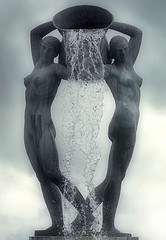 «El hombre, decía Ortega y Gasset, no es libre para eludir la coacción permanente de la colectividad sobre su persona que designamos con el inexpresivo nombre de "Estado", pero ciertos pueblos, en ciertas épocas, han dado libremente a esa coacción la figura institucional que preferían -han adaptado el Estado a sus preferencias vitales, le han impuesto el gálibo que les proponía su albedrío-. Eso y no otra cosa es vida como libertad»68. ¿Cómo se conducirá el europeo en las circunstancias actuales? ¿Podrá cambiar su perspectiva histórica? ¿Se liberará del superestatismo de la Unión Europea? ¿Sabrá, en suma, ser fiel a la tradición europea de lo Político y descubrir en el Grossraum la vida como libertad? La obra de Rosenstiel sigue suministrando, en este sentido, buenos argumentos para la reflexión política sobre el futuro de Europa.
«El hombre, decía Ortega y Gasset, no es libre para eludir la coacción permanente de la colectividad sobre su persona que designamos con el inexpresivo nombre de "Estado", pero ciertos pueblos, en ciertas épocas, han dado libremente a esa coacción la figura institucional que preferían -han adaptado el Estado a sus preferencias vitales, le han impuesto el gálibo que les proponía su albedrío-. Eso y no otra cosa es vida como libertad»68. ¿Cómo se conducirá el europeo en las circunstancias actuales? ¿Podrá cambiar su perspectiva histórica? ¿Se liberará del superestatismo de la Unión Europea? ¿Sabrá, en suma, ser fiel a la tradición europea de lo Político y descubrir en el Grossraum la vida como libertad? La obra de Rosenstiel sigue suministrando, en este sentido, buenos argumentos para la reflexión política sobre el futuro de Europa.
J. Molina
Notas
1 Véase La diplomacia, en «Razon Española» num. 101, 2000. Además, Negro PavÓn, D., El consenso se sulfura, en «La Razón», 8 de febrero de 2000.
2 Tratada magistralmente por DIEZ DEL CORRAL, L., El rapto de Europa. Alianza. Madrid, 1974.
3 Sobre lo infundado de tantos mea culpa puede verse DE ROUGEMONT, D., Europa como posibilidad. Taurus. Madrid, 1946, pp. 103-111. Imprescindible en el macuto de campaña ARON, R., Plaidoyer pour l'Europe décadente. Robert Laffont. Paris, 1977.
4 El realismo politico constituye la linea de resistencia frente al neorrepublicanismo, definido por quien es a la sazón uno de sus más acreditados representantes franceses, no sin cierta ambiguedad, como una forma abstracta de pensar las exigencias de la politica sin tener en cuenta los «ámbitos de civilización». TENZER N., La pomica y la filosofia politica: ensayo de definición conjunta, en DEL AGUILA, R. et al, «La politica ensayos de definición». Sequitur. Madrid, 2000, p. 73 En el prólogo a un texto ocasionalista, como lo son todas las piezas del verdadero pensamiento politico—se quiera o no, la verdad politica es polemogena y beligerante—,se referia Femandez de la Mora a que el «pensamiento politico occidental es platonizante porque arranca de la hipótesis de que existe el Estado ideal, o sea, una formula constitucional perfecta válida para cualquier tiempo y lugar». El Estado de obras. Doncel. Madrid, 1976 p 7 En ei neorrepublicanismo ha retoñado, sin duda, el modo de pensar «platonizante». Ello explica el equivoco prestigio politico de filósofos sociales como Isaiah Berlin.
5 Para esto vease NEGRO PAVON, D., «EI liberalismo, la izquierda del siglo X». En SANABRIA, F. y DE DIEGO, E., ed., Elpensamiento liberal en elfin de siglo. Fundacion Cánovas del Castillo. Madrid, 1997
6 Vease MOLINA CANO, J., Elproblema de la democracia moral y la teoria de lasformas de gobierno en Julien Freund, en «Hespendes», núm. 20, 2000.
7 Sobre el Estado moderno como «centro» véase NEGRO PAVON, D., Ontologia de la Derecha y la izquierda. Un posible capítulo de reologia pomica, en «Anales de la Real Academia de Ciencias Morales y Politicas», ano Ll, num. 76
8 Puede consultarse MANENT, P., La cité de l'homme. Fayard. Paris, 1994. También ARENDT, H., La condición humana. Paidós. Barcelona, 1996 DONZELOT, J., L'invention du social. Essai sur le déclin des passionspolitiQues. Seuil. Paris, 1994
9 Véase FREUND, J., Die industrielle Konfliktgesellschaft, en «Der Staat», vol. 16 num. 2, 1977
10 Véase SCHUMPETER, J. A., La crisis del Estadofiscal, en «Hacienda Publica Española», num. 2, 1970.
11 Es el caso, entre otros, de FRIEDMAN, M., Libertad de elegir. Planeta-D'Agostini. Barcelona, 1993.
12 Vease el sugestivo libro de FUNES ROBERT, M., La lucha de clases en el siglo XXI. Vision política de las crisis económicas de nuestro tiempo. ESIC. Madrid, 1997.
13 Vease Más allá de la oferta y la demanda. Valencia. Fomento de cultura, 1960, pp. 198, 206, 255, 323. En terminos equivalentes, pero con menos recato, se expresa ROTHBARD, M. N., Economistes et charlatans. Les Belles Lettres. Paris, 1991.
14 Sobre esto, MOLINA, J., La politica social en la historia. Diego Marin Librero. Murcia, 2000.
15 Al menos hasta la publicacion en 1965 del libro de FERNANDEZ DE LA MORA, G., El crepúsculo de las ideologfas, debelador del modo de pensar ideológico. Se cita casi siempre el volumen miscelaneo de Daniel Bell, The End of Ideologies (1960), como una referencia fundamental de la literatura antiideologica curiosamente, sus páginas postulan la antitesis de una politica sana y desideologizada. En opinión dei sociologo norteamericano, acuñador de buenos lemas, el fin de las ideologias se resume en «un acuerdo general respecto de cuestiones politicas como la aceptación del Estado social, el deseo de un poder descentralizado, el sistema de economia mixta y el pluralismo politico». Vease BELL, D., El fn de las ideologías. Ministerio de Trabajo. Madrid, 1992, p. 449. Bell no advirtió que ese «consenso general» ha sido una de las causas de la despolitizadora del continente europeo.
16 Imprescindible CONDE, J., «El hombre, animal politico», en Escritos y fragmentospolíticos. Instituto de Estudios Politicos. Madrid, 1974, vol. ll, pp. 21 sq.
17 Véanse CAMPI, A., Schmztt, Freund, Miglio. Figure e temi del realismo politico europeo. Akropolis. Florencia, 1996. MOLINA, J., Julien Freund, lo politico y la polítca. Sequitur. Madrid, 2000, pp. 59 sq. Sobre la tradición liberal de lo Politico, imprescindible NEGRO PAVON, D., La tradiczón liberal y el Estado. Union Editorial. Madrid, 1995. También MOLINA, J., «La supuesta apoliticidad del liberalismo», en SANABRIA, F. y DE DIEGO, E., op. cit. Sobre las raices politicas o «realistas» del liberalismo, MANENT, P., L'histoire intellectuelle du libéralisme. Calmann-Lévy. Paris, 1987.
18 Vease ¿Despolitizacion de Europa?, en «Razón Española», núm. 81, 1997.
19 Véase NEGRO PAVON, D., Liberalismo y socialismo. La encrucijada intelectual de Stuart Mill. 1. E. P. Madrid, 1975.
20 El topico fue legalizado más tarde por el revisionista aleman Eduard Bemstein en folletos como ¿Qué es el socialismo? Véase en BERNSTEIN, E., Socialismo democrático. Tecnos. Madrid, 1990. Esta opinión, que tenia no obstante algo de verdad, se combinó peligrosamente con el socialismo alemán de tipo prusiano promovido por la socialdemocracia de Ferdinand Lasalle, responsable historico de la estatizacion del pensamiento socialista, cuya gran obsesión personal fue la destruccion del movimiento cooperativista aleman, insusceptible de ideologizacion. Vease LASALLE, F., Manifiesto obrero y otros escritos políticos. Centro de Estudios Constitucionales. Madrid, 1989.
21 Vease LUCKACS, G., Historia y conciencia de clase. Grijalbo. Barcelona, 1975.
22 Sobre el estatismo hay sugestivas acotaciones en GAGO GUERRERO, P. F., Acerca del surgimiento de las ideologías, en «Cuenta y Razon», num. 103, 1997. Con una óptica distinta, HUERTA DE SOTO, J., «Estatismo y corrupción ética», en SANABRIA, F. y DE DIEGO, E., op. cit.
23 La unificación europea y la teoria del Gran espacio, en «Disenso», núm. 16, 1998, p. 52. Existe una version ampliada: La unificaci6n de Europa y la teoria del Gran espacio en «Carl Schmitt-Studien», 1/2000.
24 Puede consultarse SCHMITT, C., Escritos de politica mundiaL Heracles. Buenos Aires, 1995. Especialmente los textos: «EI concepto de Imperio en el Derecho Internacional», «La lucha por los Grandes espacios y la ilusion Norteamericana» y «La unidad del mundo».
25 MASCHKE, G., loc. cit., p. 57.
26 Origenes, balance y perspectiva de este movimiento en DIAZ CARRERA, C. (ed.), Elfederalismo global. Union Editorial. Union Editorial, 1989.
27 El alsaciano Francis Rosenstiel, a la sazón alto funcionario del Consejo de Europa, cuya jefatura de Relaciones exteriores desempeño, ha sido profesor de Relaciones intemacionales y Derecho internacional economico en la Universidad de Ciencias Juridicas y Politicas de Estrasburgo (ahora Universidad Robert Schuman o Estrasburgo III). Su obra no es muy extensa, destacando los trabajos que ha dedicado a la cuestión judía. Asi, en colaboracion con Sholomo Giora Shoham, edito Der Sige des Opfers. Klett & Cotta. Stuttgart, 1980. Asi mismo, Big Brother, un inconnufamilier: Contributions au Colloque George OrvJell 1984 mythes et réalités. L'Age de l~omme. Paris, 1986. Tolede et Jerusalem: tentative de symbiose entre les cultures espagnole et judatque. L’Age de l'homme. Paris, 1992. Una de sus últimas publicaciones es Les dents du destin: Vichy et suites. Transition. Paris, 1997.
28 Burdeos. Ed. A. Pedone, 1962.
29 Véase FREUND, J., La mia correspondenza con Carl Schmitt, en «Studi Perugini», num. 1, 1996, p. 208.
30 Kiepenheuer & Witsch. Colonia y Berlin, 1964.
31 ROSENSTIEL, F., Elprincipio de la supranacionalidad, p. 33.
32 Op. cit., p- 25
33 SCHMITT, C., Théologiepolitique. Gauimard. Paris, 1988, p. 15.
34 ROSENSTIEL, F., op. cit., p. 27. Aunque después se volverá a insistir en ello, una de las ultimas aportaciones de este juridicismo ayuno de saber politico la constituye la pintoresca teoria de la «soberania compartida» patrocinada en Espana por algunas partidocracias regionales.
35 Op. cit., p. 190. Decía Freund, dandole la vuelta a la afirmacion, que la única alternativa a la politica es la misma politica. En L'Essence du Politique. Sirey. Paris, 1986, p. 618.
36 Op. cit., p. 41.
37 Op. cit., p. 171. La soberanía es indivisible y en consecuencia no puede compartirse. Op. cit., p. 51. Así pues, desde el punto de vista de la politica interior, la «poliarquía» o «pluralismo social» en el sentido de Schmitt, no pasa de ser una enfermedad de la politica y de la decision que se manifiesta al final de un ciclo politico. Vease MIGL10, G. Monocracia, en «Hespérides», num. 20, 2000. SCHMITT, C., El concepto de lo político. Alianza. Madrid, 1992, pp. 70 sq.
38 Vease Elpoder. Los genios invisibles de la ciudad. Tecnos. Madrid, 1991. Pp. 212 sq. A la «soberanía de la Constitución» únicamente apela quien no cree en los titulos y facultades del poder legitimo y en su mision configuradora de un orden politico sano.
39 Organizacion e integracion económica intemacional. Fomento de Cultura. Valencia, 1959, p. 359.
40 Naturalmente, ningún europeo es capaz de concebir una intervención de la Unión en el conflicto de Chechema. El liderazgo indiscutido en Europa de los Estados Unidos de América ni siquiera merece ya un comentario. En 1939 Carl Schmitt defmio muy bien este tipo de situaciones, al definir el Impero o Gran espacio como «aquellas potencias rectoras y propulsoras cuya idea politica irradia en un espacio determinado y que excluyen por principio la intervención de otras potencias extrañas al mismo». Vease «El concepto de Imperio en el Derecho intemacional» (traduccion de Javier Conde), en Escritos de política mundial El moralismo internacionalista y la retórica de la 0. N. U. apenas si logran maquillar la degradacion geopolitica del viejo continente.
41 TheFederalistsPapers. Mentor. NuevaYork, 1961 p 83
42 Muy pocos se han opuesto a la emigracion de la ideologia estatista hacia Bruselas y Estrasburgo. Durante los años 1980 lo intentaron casi en solitario los intelectuales del rnstitute of Economic Affairs, consejeros áulicos de Margaret Thatcher, y unos pocos neoliberales del continente. En los 90, con menos exito, se han sumado a las voces criticas las de los escritores de la Nouvelle Droite francesa, las de los neofederalistas lombardos en Italia y algunas otras. Vease MIGL10, G., Ex uno plures, en «Limes-, num. 4 1993 También del mismo: Laprospettiua teorica del nuovofederalismo (intervista a cura di Marco Bassani~, en «Federalismo & Societa», núm. 2 1994. Finalmente: HUERTA DE SOTO, J., «Teoria del nacionalismo liberal» y «Por una Europa libre», en Estudios de Economia Política. Unión Editorial. Madrid, 1994 El supuesto europeísmo de los ciudadanos europeos, que en algunos casos puede incluso ser puro y no un producto de la propaganda oficial, tiene más que ver con la destrucción del espiritu de las grandes naciones europeas. Véase MASCHKE, G., La unificación de Europa y la teoría del Gran espacio, loc. cit., p. 31
43 La máxima contradiccion se produce cuando se postula oficialmente un régimen de maxima transparencia de las inversiones, como sucede por ejemplo con el levantamiento del secreto bancario en algunos paises. Este tipo de aspiraciones, por definicion, carecen de sentido en un entorno en el que, teoricamente al menos, se ha librado a los flujos de capital de la vigilancia administrativa. Identica paradoja se observa en la ofensiva de la 0. C. D. E. contra los paraisos fiscales de la tierra. En plena revolucion digital no parece que tenga mucho sentido de la realidad actuar los resortes de la vieja policia fiscal.
44 Para Rosenstiel, «habiendo sido defmida la soberania en su fase inicial, como la coincidencia de lo juridico y de lo politico, el hecho de que haya hoy, de una parte, una soberania juridica sin efectividad politica y, de otra, una soberania juridica sin efectividad juridica, da toda la medida de lo que hemos llamado una soberania en suspenso». Op. cit., p. 72.
45 Op. Ctt., p. 67.
46 ROSENSTIEL, F., op. cit., p. 95.
47 Op. cit., pp. 109-110. Aunque, tal vez, la situación cliopolitica no sea tan favorable y no resulte conveniente llevar tan lejos la analogía.
48 Op. cit., p. 107.
49 A la que habria que añadir, probablemente, la confusión introducida en paises como España, Italia o el Canadá, cuyas elites regionales, en algunos casos, han patrocinado una interpretación del federalismo que hace de dicho principio un instrumento para desbastar Estados.
50 Op. at., p. 113.
51 Las Atlántidas y Del Imperlo romano. Alianza. Madrid, 1985 pp 176 177.
52 ROSENSTIEL, F., op. cit., p. 139
53 Op. cit., p. 207
54 Vease SCHMITT, C., Sobre los tres modos depensar la ciencia jurídica. Tecnos. Madrid, 1996.
55 De ahi que no tenga mayor importancia la alocución del Presidente de la República Francesa en el Reichstag, proponiendo la fantasmagoria de una Constitución europea. Después de todo, lo que Fernandez de la Mora llamó «mania constitutoria» no es unicamente un mal hispanico. Véase FERNANDEZ DE LA MORA, G., El Estado de obras. P. 23-27
56 Op. cit., p. 141 Mas adelante asegura que la creencia de la aceleracion de lo Politico por la administracion no es más que un mito. P. 194.
57 Op. cit., p. 139
58 La ruinosa botadura del Euro se parece mucho a la imposición de una «moneda de ocupación» emitida por los burócratas de Bruselas. Sobre la dimension politica de los monopolios monetarios estatales véase HAYEK, F. A., La desnacionalización del dinero. Unión Editorial. Madrid, 1983 pp. 25-38 102-109 128-130. HUERTA DE SOTO, J., «La teoría del Banco central y de la Banca libre», en Estudios de Economiapomica.
59 La politica exterior y de seguridad común europea constituye realmente una caricatura de la idea original. La pregunta decisiva ni siquiera se formula: ¿quién es el enemigo de Europa?
60 Op, cit., p. 163.6l 0p.cit.,p 184.62 op. cit., p. 165.63 Vease L'aventure dupolitique. Criterion. Paris, 1991, p. 160.64 ROSENSTIEL, F., op. cit., p. 93. 65 Op.cit.,p.115. 66 Véanse SCHMITT, C., Escritos de Politica Mundial MASCHKE, G., «La unificación de Europa y la teoria del Gran espacio», en loc. cit. Tarnbien D'ORS, A., Laposesión del espacio. Civitas. Madrid, 1998, pp. 56-60.67 Véase ROSENSTIEL, F., op. cit, p. 204. 68 Op, cit., p. 176.s
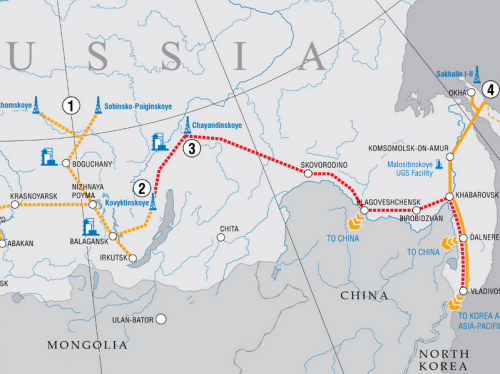
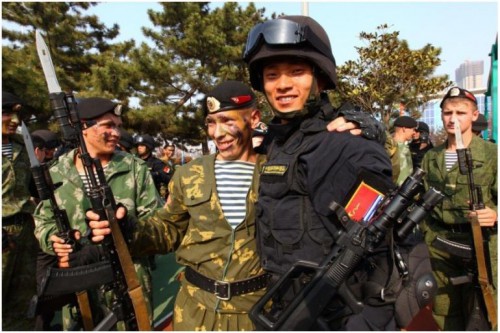




 del.icio.us
del.icio.us
 Digg
Digg Se habla y se escribe, con la aquiescencia general, de las Europas de los pueblos, de las regiones, de las lenguas, de los negocios. Tempranamente asistimos, ya al erigirse las democracias de Potsdam, a la Europa de los partidos, cuya verdadera dimensión se ha vuelto a poner de manifiesto en fechas recientes con ocasión de la estigmatización antipolítica de la nación austriaca y su gobierno consensualista (1). Hay también la Europa de los políticos de vocación humanitaria y cosmopolita, especie venática en la que se significa un mal profundo de civilización. En este sentido, hace décadas que Europa proclama con contundencia ante el mundo que se arrepiente de sus errores, encarando de la peor forma posible lo que Julien Freund denominó el fin del Renacimiento. Los artistas entremetidos y los intelectuales denunciantes, profesionales de la crítica, piden perdón a los muertos y a los vivos por las consecuencias de la fáustica misión del europeo (2): la aceleración del tiempo histórico, el impacto de la tecnología sobre el aluvión de la vida humana colectiva (la Tradición). El viejo continente, así se ha decidido, es «culpable de los servicios prestados».
Se habla y se escribe, con la aquiescencia general, de las Europas de los pueblos, de las regiones, de las lenguas, de los negocios. Tempranamente asistimos, ya al erigirse las democracias de Potsdam, a la Europa de los partidos, cuya verdadera dimensión se ha vuelto a poner de manifiesto en fechas recientes con ocasión de la estigmatización antipolítica de la nación austriaca y su gobierno consensualista (1). Hay también la Europa de los políticos de vocación humanitaria y cosmopolita, especie venática en la que se significa un mal profundo de civilización. En este sentido, hace décadas que Europa proclama con contundencia ante el mundo que se arrepiente de sus errores, encarando de la peor forma posible lo que Julien Freund denominó el fin del Renacimiento. Los artistas entremetidos y los intelectuales denunciantes, profesionales de la crítica, piden perdón a los muertos y a los vivos por las consecuencias de la fáustica misión del europeo (2): la aceleración del tiempo histórico, el impacto de la tecnología sobre el aluvión de la vida humana colectiva (la Tradición). El viejo continente, así se ha decidido, es «culpable de los servicios prestados». Los problemas del liberalismo y del socialismo están ligados decisivamente a la cuestión de lo político y al problema histórico de las plurales configuraciones de la política como «habitus» (16). En ambas ideologías refléjase con acuidad el destino de la política europea, abocada al utopismo, al moralismo, al abstraccionismo, en definitiva, a la subversión de la tradición de lo Político, que unos denominan «realismo» y otros «liberalismo político» por contraposición al liberalismo ideológico (17). Puede afirmarse, por tanto, que ni el neoliberalismo de Hayek y otros economistas, ni el socialismo postcomunista pueden hoy responder a los verdaderos desafíos de Europa (Cliopolítica, Geopolítica), representados a todos los efectos por la despolitización. Por despolitización de Europa entendemos el abandono de lo Político y no tanto la desideologización de la política europea postulada por Fernández de la Mora (18).
Los problemas del liberalismo y del socialismo están ligados decisivamente a la cuestión de lo político y al problema histórico de las plurales configuraciones de la política como «habitus» (16). En ambas ideologías refléjase con acuidad el destino de la política europea, abocada al utopismo, al moralismo, al abstraccionismo, en definitiva, a la subversión de la tradición de lo Político, que unos denominan «realismo» y otros «liberalismo político» por contraposición al liberalismo ideológico (17). Puede afirmarse, por tanto, que ni el neoliberalismo de Hayek y otros economistas, ni el socialismo postcomunista pueden hoy responder a los verdaderos desafíos de Europa (Cliopolítica, Geopolítica), representados a todos los efectos por la despolitización. Por despolitización de Europa entendemos el abandono de lo Político y no tanto la desideologización de la política europea postulada por Fernández de la Mora (18). En junio de 1961 tuvo lugar en la Facultad de Derecho de Estrasburgo la defensa de la tesis del doctorando F. Rosenstiel. La tesis fue publicada al año siguiente con el título Le principe de supranationalité. Essai sur les rapports de la politique et du droit (28). La obra no despertó el interés que merecía, pero poco después fue preparada la traducción al alemán. En ella tuvo Carl Schmitt una participación puntual y preciosa. El gran jurista había conocido el trabajo de Rosenstiel en una copia que, por mediación de un amigo común, Julien Freund, había recibido a principios de 1961. La impresión que le causó fue honda, hasta el punto de haber considerado la oportunidad de que un prólogo suyo acompañase la edición francesa, aparecida, a la sazón, cuando los alemanes, en palabras del propio Schmitt, temerosos de cualquier decisión en el terreno de la unificación europea, habían hecho de la no decisión una moral: «su opción por la Europa comunitaria constituye una opción a favor del ideal de la no decisión» (29). Aunque Schmitt, finalmente, rehusó escribir el prólogo, la edición alemana conservó, por deseo expreso de Rosenstiel, el subtítulo «fascinante» sugerido por aquel: Supranationalität. Eine Politik des Unpolitischen (30), es decir, La supranacionalidad. Una política de lo impolítico.
En junio de 1961 tuvo lugar en la Facultad de Derecho de Estrasburgo la defensa de la tesis del doctorando F. Rosenstiel. La tesis fue publicada al año siguiente con el título Le principe de supranationalité. Essai sur les rapports de la politique et du droit (28). La obra no despertó el interés que merecía, pero poco después fue preparada la traducción al alemán. En ella tuvo Carl Schmitt una participación puntual y preciosa. El gran jurista había conocido el trabajo de Rosenstiel en una copia que, por mediación de un amigo común, Julien Freund, había recibido a principios de 1961. La impresión que le causó fue honda, hasta el punto de haber considerado la oportunidad de que un prólogo suyo acompañase la edición francesa, aparecida, a la sazón, cuando los alemanes, en palabras del propio Schmitt, temerosos de cualquier decisión en el terreno de la unificación europea, habían hecho de la no decisión una moral: «su opción por la Europa comunitaria constituye una opción a favor del ideal de la no decisión» (29). Aunque Schmitt, finalmente, rehusó escribir el prólogo, la edición alemana conservó, por deseo expreso de Rosenstiel, el subtítulo «fascinante» sugerido por aquel: Supranationalität. Eine Politik des Unpolitischen (30), es decir, La supranacionalidad. Una política de lo impolítico. En el «orden de las soberanías normativamente subordinadas» (supranacionalidad) no halló el autor un verdadero principio federativo. Este se encuentra en un terreno muy distinto de la realidad política: en el «orden de las soberanías integradas», lo que se conoce como «potencia pública federal». Así, mientras que la «supranacionalidad de las comunidades es una afirmación de intención, la supranacionalidad de la federación es una afirmación de poder» (46). Para el autor, el principio federalista constituye un verdadero principio político federativo. En él cifra la posibilidad de una unión verdadera de los Estados europeos, dado que su situación geopolítica sería similar a la de los Estados de América del Norte en vísperas de la Constitución de 1787 (47). Entendido como «técnica jurídica de la democracia», el federalismo es un instrumento político que «se convierte en un modo de vinculación de las soberanías, apto para darles una única convergencia en función de una situación dada» (48). El problema, empero, es la deficiente recepción del ideal federalista, entendido como una doctrina universalista (en el sentido de Proudhon o en el de los partidarios del federalismo integral, por ejemplo), pues eso constituye la antítesis de lo Político. La Federación mundial no tiene más sentido que el Estado mundial. El ecumenismo cataláctico, moralista y religioso tiene su antítesis en el carácter partitivo de lo Político. Dicho de otra manera: para que las actividades económica o religiosa unan, lo Político tiene que separar. En el fondo, el autor ha diagnosticado muy bien la disyuntiva europea: o una supranacionalidad incapaz de adaptarse a las mutaciones en lo Político, o un federalismo funcional o parcial, meramente técnico. Cualquier cosa antes que el federalismo político. A esta especie de indefinición (49) tal vez pueda imputarse el alejamiento de lo Político de la Unión Europea, a pesar de que sus instituciones quieran consagrarse a la defensa de un régimen político concreto -el mismo Rosenstiel, confundiendo la democracia moral y la política, entiende que el federalismo es un «humanismo al servicio de la democracia» (50)-.
En el «orden de las soberanías normativamente subordinadas» (supranacionalidad) no halló el autor un verdadero principio federativo. Este se encuentra en un terreno muy distinto de la realidad política: en el «orden de las soberanías integradas», lo que se conoce como «potencia pública federal». Así, mientras que la «supranacionalidad de las comunidades es una afirmación de intención, la supranacionalidad de la federación es una afirmación de poder» (46). Para el autor, el principio federalista constituye un verdadero principio político federativo. En él cifra la posibilidad de una unión verdadera de los Estados europeos, dado que su situación geopolítica sería similar a la de los Estados de América del Norte en vísperas de la Constitución de 1787 (47). Entendido como «técnica jurídica de la democracia», el federalismo es un instrumento político que «se convierte en un modo de vinculación de las soberanías, apto para darles una única convergencia en función de una situación dada» (48). El problema, empero, es la deficiente recepción del ideal federalista, entendido como una doctrina universalista (en el sentido de Proudhon o en el de los partidarios del federalismo integral, por ejemplo), pues eso constituye la antítesis de lo Político. La Federación mundial no tiene más sentido que el Estado mundial. El ecumenismo cataláctico, moralista y religioso tiene su antítesis en el carácter partitivo de lo Político. Dicho de otra manera: para que las actividades económica o religiosa unan, lo Político tiene que separar. En el fondo, el autor ha diagnosticado muy bien la disyuntiva europea: o una supranacionalidad incapaz de adaptarse a las mutaciones en lo Político, o un federalismo funcional o parcial, meramente técnico. Cualquier cosa antes que el federalismo político. A esta especie de indefinición (49) tal vez pueda imputarse el alejamiento de lo Político de la Unión Europea, a pesar de que sus instituciones quieran consagrarse a la defensa de un régimen político concreto -el mismo Rosenstiel, confundiendo la democracia moral y la política, entiende que el federalismo es un «humanismo al servicio de la democracia» (50)-. «Tanto desde el punto de vista jurídico como desde el político, la "supranacionalidad" constituye una máquina sin motor» (52). Con esta categórica afirmación el autor pone principio al examen de algunas referencias doctrinales y jurisprudenciales para mejor ilustrar su tesis. No buscó Rosenstiel, en ningún caso, la exhaustividad, pues no es el suyo un tratado de exégesis jurídica. Esto permite, sin violentar la estructura del libro, destacar las contraposiciones que se manejan a lo largo de la obra, pero especialmente en la segunda parte, sobre todo, la dialéctica entre lo Político y lo Jurídico, asunto que justifica su análisis. No obstante, Rosentiel dejaba aflorar sus opiniones acerca de las relaciones entre lo político y lo técnico, lo político y lo económico y también, naturalmente, las de lo Político con lo Militar.
«Tanto desde el punto de vista jurídico como desde el político, la "supranacionalidad" constituye una máquina sin motor» (52). Con esta categórica afirmación el autor pone principio al examen de algunas referencias doctrinales y jurisprudenciales para mejor ilustrar su tesis. No buscó Rosenstiel, en ningún caso, la exhaustividad, pues no es el suyo un tratado de exégesis jurídica. Esto permite, sin violentar la estructura del libro, destacar las contraposiciones que se manejan a lo largo de la obra, pero especialmente en la segunda parte, sobre todo, la dialéctica entre lo Político y lo Jurídico, asunto que justifica su análisis. No obstante, Rosentiel dejaba aflorar sus opiniones acerca de las relaciones entre lo político y lo técnico, lo político y lo económico y también, naturalmente, las de lo Político con lo Militar.  Tocante a la politicidad de la Unión Europea, resulta obligado referirse, aunque sea en último lugar, a uno de sus aspectos decisivos: el militar. El fracaso de la Comunidad Europea de Defensa (C. E. D.), que podría haber sido el verdadero germen político de la Unión, se debió probablemente a que anunciaba efectos irreversibles en lo Político (59). La C.E.D., en opinión de Rosenstiel, fue rechazada «tanto por los mecanismos que comprendía, como por los efectos de aceleración política que implicaba en breve plazo» (60). En ese momento se frustró y retrasó sine die la posibilidad de una verdadera política exterior europea -tal vez de una doctrina Monroe para el Viejo continente, cada vez más lejana-: «a las sirenas demasiado comprometedoras de la C. E. D. y de la Comunidad Europea se debía preferir la Unión de la Europa Occidental (U. E. O.), instituida por los acuerdos de París de 23 de octubre de 1954» (61). Dicho de otra forma, la C. E. D. chocó con la «lucidez política de los nacionalismos» (62). Las cosas, probablemente, no han cambiado mucho desde que la Asamblea Nacional Francesa rechazase la ratificación de los Protocolos de la Comunidad Europea de Defensa el 30 de agosto de 1954, propuesta por el gobierno de Mendès France.
Tocante a la politicidad de la Unión Europea, resulta obligado referirse, aunque sea en último lugar, a uno de sus aspectos decisivos: el militar. El fracaso de la Comunidad Europea de Defensa (C. E. D.), que podría haber sido el verdadero germen político de la Unión, se debió probablemente a que anunciaba efectos irreversibles en lo Político (59). La C.E.D., en opinión de Rosenstiel, fue rechazada «tanto por los mecanismos que comprendía, como por los efectos de aceleración política que implicaba en breve plazo» (60). En ese momento se frustró y retrasó sine die la posibilidad de una verdadera política exterior europea -tal vez de una doctrina Monroe para el Viejo continente, cada vez más lejana-: «a las sirenas demasiado comprometedoras de la C. E. D. y de la Comunidad Europea se debía preferir la Unión de la Europa Occidental (U. E. O.), instituida por los acuerdos de París de 23 de octubre de 1954» (61). Dicho de otra forma, la C. E. D. chocó con la «lucidez política de los nacionalismos» (62). Las cosas, probablemente, no han cambiado mucho desde que la Asamblea Nacional Francesa rechazase la ratificación de los Protocolos de la Comunidad Europea de Defensa el 30 de agosto de 1954, propuesta por el gobierno de Mendès France. «El hombre, decía Ortega y Gasset, no es libre para eludir la coacción permanente de la colectividad sobre su persona que designamos con el inexpresivo nombre de "Estado", pero ciertos pueblos, en ciertas épocas, han dado libremente a esa coacción la figura institucional que preferían -han adaptado el Estado a sus preferencias vitales, le han impuesto el gálibo que les proponía su albedrío-. Eso y no otra cosa es vida como libertad»68. ¿Cómo se conducirá el europeo en las circunstancias actuales? ¿Podrá cambiar su perspectiva histórica? ¿Se liberará del superestatismo de la Unión Europea? ¿Sabrá, en suma, ser fiel a la tradición europea de lo Político y descubrir en el Grossraum la vida como libertad? La obra de Rosenstiel sigue suministrando, en este sentido, buenos argumentos para la reflexión política sobre el futuro de Europa.
«El hombre, decía Ortega y Gasset, no es libre para eludir la coacción permanente de la colectividad sobre su persona que designamos con el inexpresivo nombre de "Estado", pero ciertos pueblos, en ciertas épocas, han dado libremente a esa coacción la figura institucional que preferían -han adaptado el Estado a sus preferencias vitales, le han impuesto el gálibo que les proponía su albedrío-. Eso y no otra cosa es vida como libertad»68. ¿Cómo se conducirá el europeo en las circunstancias actuales? ¿Podrá cambiar su perspectiva histórica? ¿Se liberará del superestatismo de la Unión Europea? ¿Sabrá, en suma, ser fiel a la tradición europea de lo Político y descubrir en el Grossraum la vida como libertad? La obra de Rosenstiel sigue suministrando, en este sentido, buenos argumentos para la reflexión política sobre el futuro de Europa.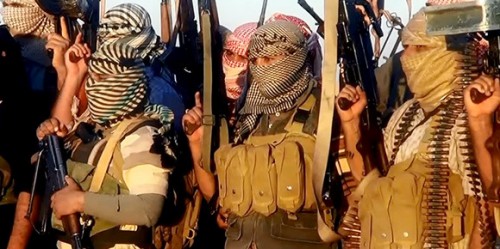
 Putin: Europa braucht “Versicherungsnetzwerk” gegen Maidan-Szenarien
Putin: Europa braucht “Versicherungsnetzwerk” gegen Maidan-Szenarien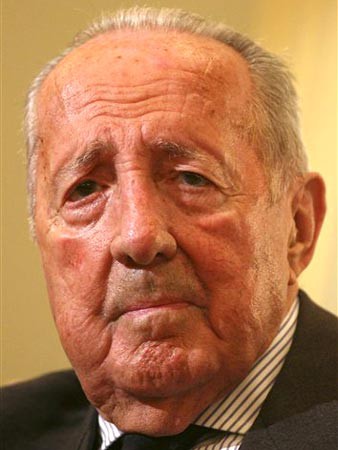 Die Ukraine-Krise bestimmt nicht nur die Medien, sondern auch die Weltpolitik der letzten Monate. Der Konflikt zwischen Russland und den USA hat sich wieder verschärft, Europa laviert zwischen Sanktionen und Wirtschaftsinteressen, während Russland sich lDie Ukraine-Krise bestimmt nicht nur die Medien, sondern auch die Weltpolitik der letzten Monate. Der Konflikt zwischen Russland und den USA hat sich wieder verschärft, Europa laviert zwischen Sanktionen und Wirtschaftsinteressen, während Russland sich lieber Asien zuwendet. Peter Scholl-Latour mit seiner Analyse der Entwicklung des postsowjetischen Raums im Exklusiv-Interview für die Stimme Russlands.
Die Ukraine-Krise bestimmt nicht nur die Medien, sondern auch die Weltpolitik der letzten Monate. Der Konflikt zwischen Russland und den USA hat sich wieder verschärft, Europa laviert zwischen Sanktionen und Wirtschaftsinteressen, während Russland sich lDie Ukraine-Krise bestimmt nicht nur die Medien, sondern auch die Weltpolitik der letzten Monate. Der Konflikt zwischen Russland und den USA hat sich wieder verschärft, Europa laviert zwischen Sanktionen und Wirtschaftsinteressen, während Russland sich lieber Asien zuwendet. Peter Scholl-Latour mit seiner Analyse der Entwicklung des postsowjetischen Raums im Exklusiv-Interview für die Stimme Russlands.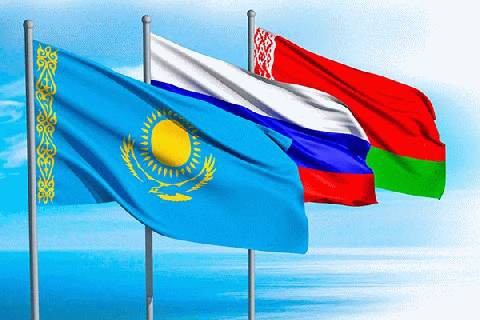
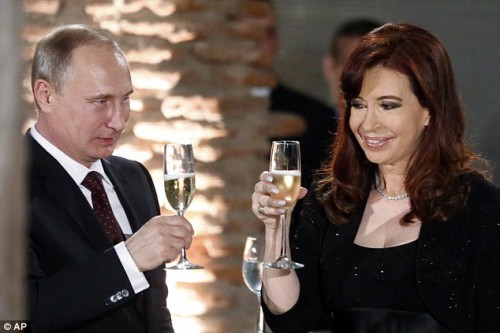
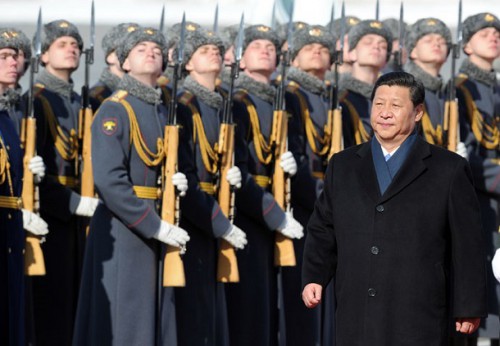
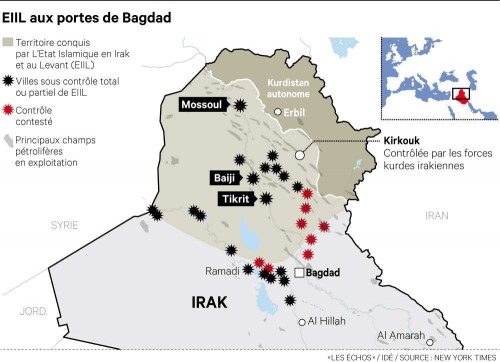
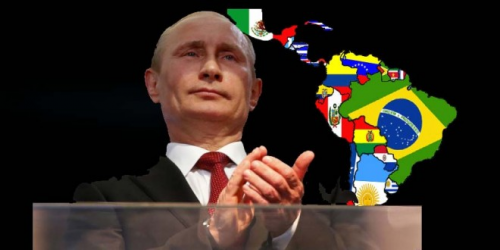
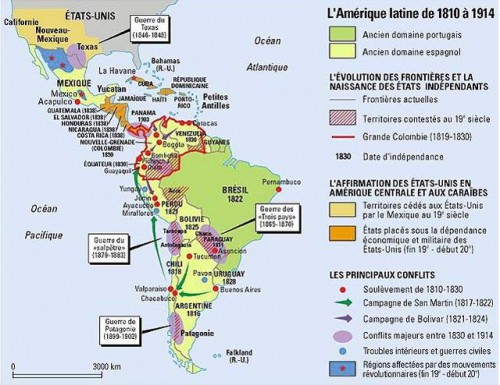
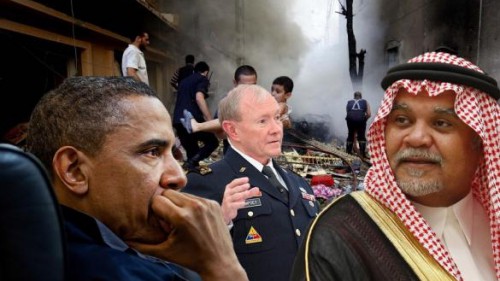
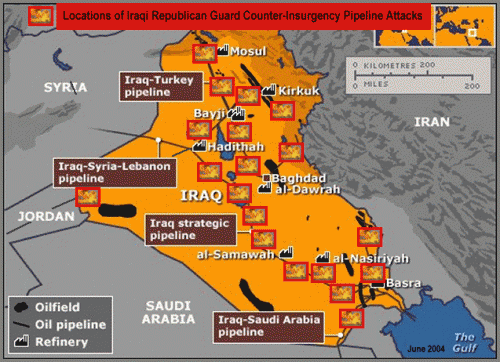
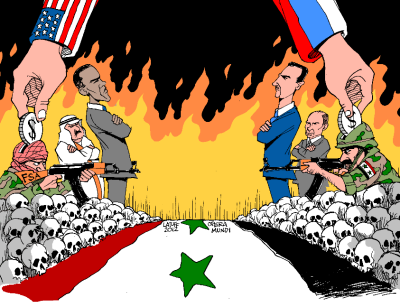
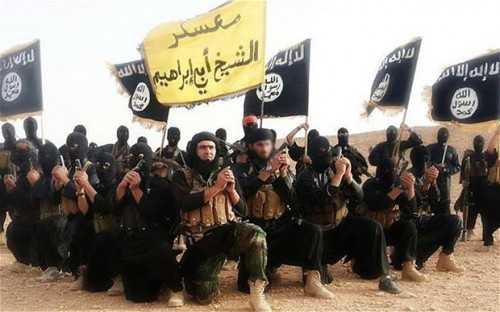
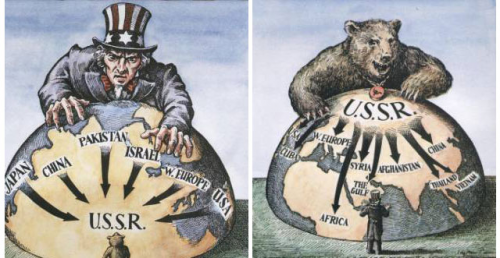
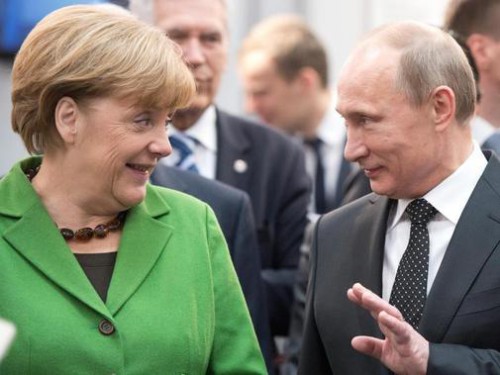
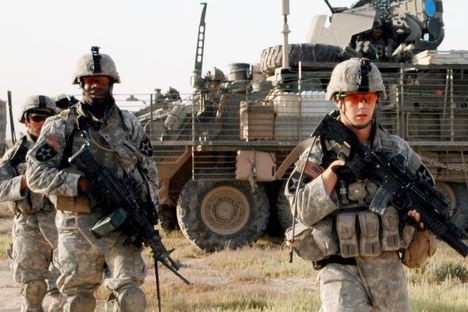
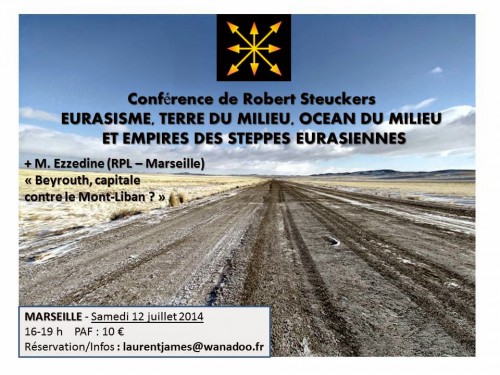
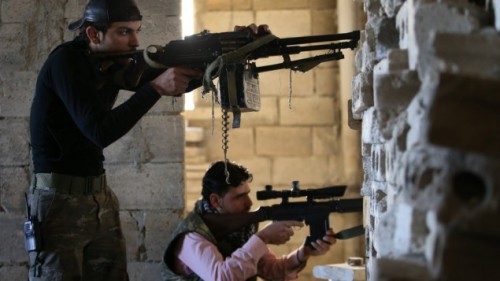
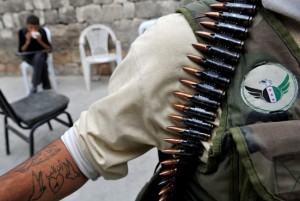 The third and final step the US must take upon losing a war is to leave chaos where victory was denied, and attach responsibility for the conflict to a disposable elected politician – in this case US President Barack Obama. While the war was clearly conceived during the administration of George Bush as early as 2007, it was executed under the watch of Obama. By attaching responsibility for the conflict to Obama, when his term is up and he passes into the hindsight of history, corporate-financier funded policy makers will have before them a clean slate upon which to begin carrying out the next leg of their continuous agenda.
The third and final step the US must take upon losing a war is to leave chaos where victory was denied, and attach responsibility for the conflict to a disposable elected politician – in this case US President Barack Obama. While the war was clearly conceived during the administration of George Bush as early as 2007, it was executed under the watch of Obama. By attaching responsibility for the conflict to Obama, when his term is up and he passes into the hindsight of history, corporate-financier funded policy makers will have before them a clean slate upon which to begin carrying out the next leg of their continuous agenda.



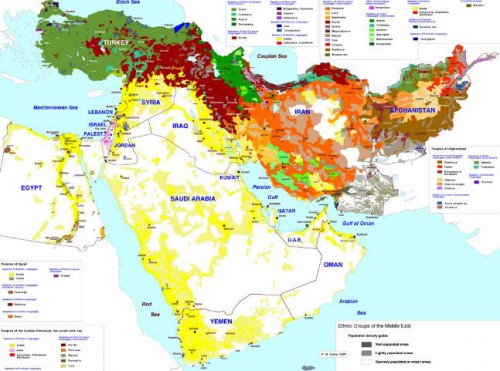
 Pour en revenir à l’Irak, la dissociation entre trois entités sunnite, chiite et kurde satisferait certains acteurs, mais en inquièterait beaucoup d’autres. Elle a été défendue par le président de l’Irak, le Kurde Jalal Talabani,( aujourd’hui en retrait pour des raisons de santé ), mais n’était pas plus recevable autrefois qu’elle ne le serait aujourd’hui par les autres partenaires. Par sa constitution, l’Irak est déjà un Etat unique, souverain, indépendant et fédéral ( Art. 1 ) ; les Kurdes y trouvent de nombreux avantages, ce qui explique leur soutien au gouvernement actuel. Ni la Turquie, ni l’Iran ne sont très favorables à la notion de « Kurdistan » ( la majorité du peuple kurde vit dans ces deux pays ) ; quant aux pays arabes du Golfe, ils ne veulent à aucun prix d’une extension du chiisme iranien sur la Mésopotamie. En résumé, le désordre, créé par l’intervention américaine n’est pas prêt de disparaître. Pour être juste, la politique revancharde envers les Sunnites du premier ministre chiite Nouri al-Maliki n’a pas amélioré les choses, au point que ce dernier est peut-être devenu un obstacle à tout règlement négocié. Oui, le monde devient bien dangereux, et on comprend qu’il est plus aisé de maintenir que de rompre l’intangibilité des frontières… Quelle que soit l’option choisie, le risque de mourir, pour rien ou non, sera présent ; autant que ce soit contre des barbares...
Pour en revenir à l’Irak, la dissociation entre trois entités sunnite, chiite et kurde satisferait certains acteurs, mais en inquièterait beaucoup d’autres. Elle a été défendue par le président de l’Irak, le Kurde Jalal Talabani,( aujourd’hui en retrait pour des raisons de santé ), mais n’était pas plus recevable autrefois qu’elle ne le serait aujourd’hui par les autres partenaires. Par sa constitution, l’Irak est déjà un Etat unique, souverain, indépendant et fédéral ( Art. 1 ) ; les Kurdes y trouvent de nombreux avantages, ce qui explique leur soutien au gouvernement actuel. Ni la Turquie, ni l’Iran ne sont très favorables à la notion de « Kurdistan » ( la majorité du peuple kurde vit dans ces deux pays ) ; quant aux pays arabes du Golfe, ils ne veulent à aucun prix d’une extension du chiisme iranien sur la Mésopotamie. En résumé, le désordre, créé par l’intervention américaine n’est pas prêt de disparaître. Pour être juste, la politique revancharde envers les Sunnites du premier ministre chiite Nouri al-Maliki n’a pas amélioré les choses, au point que ce dernier est peut-être devenu un obstacle à tout règlement négocié. Oui, le monde devient bien dangereux, et on comprend qu’il est plus aisé de maintenir que de rompre l’intangibilité des frontières… Quelle que soit l’option choisie, le risque de mourir, pour rien ou non, sera présent ; autant que ce soit contre des barbares...